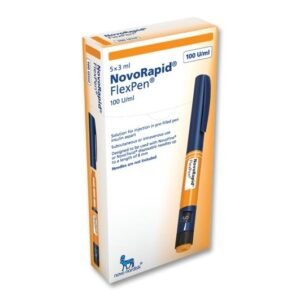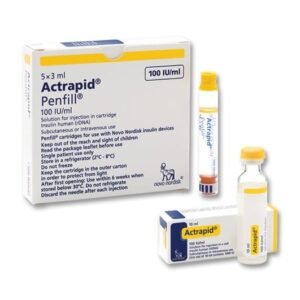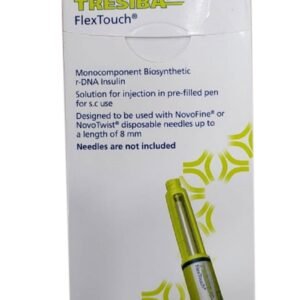What is Humulin S?
How does it work?
To counteract insulin resistance, The hypoglycaemic effect of insulin occurs when it binds to insulin receptors in muscle and fat cells, facilitating the absorption of glucose and simultaneously inhibiting hepatic glucose production. It is fast-acting insulin. The action starts after 30 min, the max effect. It occurs at 1.5 to 3.5 hours with an approximate duration of action of 7-8 hours.
What are the benefits of taking it?
Known for being a diabetes treatment medication; Humulin S helps the body convert blood sugar into energy. We always have a little sugar in our blood. This means that the pancreas has to produce small amounts of insulin during the day. When you eat, your blood sugar increases. This means that the pancreas needs to make more insulin during meals. When it is more active, the body uses more sugar and needs less insulin. When a person has diabetes, blood sugar remains high. That’s where Humulin S comes in and acts.
How do I use it and its dosage?
Make sure you get the Humulin S that your doctor has told you to use.
Follow exactly the instructions for the administration of Humulin S indicated by your doctor. Consult your doctor if you have doubts.
Dose
- Your doctor has told you which insulin to use, how much, when, and how often to inject. These instructions are for you only. Follow them exactly and visit your diabetes clinic regularly. If you change the type of insulin (for example from animal to human)
Side effects & precautions
Like all medicines, Humulin S can cause side effects, although not everybody gets them.
Human insulin can cause hypoglycaemia (low blood sugar). Possible side effects include the following:
Systemic allergy: it is very rare (affects less than 1 in 10,000 patients treated). The symptoms are as follows:
- Decreased blood pressure
- Rash all over the body
- Difficulty breathing
- Wheezing (wheezing when breathing)
- Fast heartbeat
- Sweating
If you think you have this type of insulin allergy, tell your doctor immediately.
Local allergy: it is frequent (affects less than 1 in 10 treated patients). In some patients, the injection site becomes red, swollen, or itchy. Generally, these symptoms disappear in a few days or in a few weeks. If this happens to you, see your doctor.
- Lipodystrophy (the skin becomes thicker or a kind of hole is formed): it is rare (it affects less than 1 in 100 treated patients). If you notice that your skin is getting thicker or a kind of hole in the places where you give the injections, tell your
- Edema (e.g. swelling of the arms, ankles, fluid retention) has been reported







